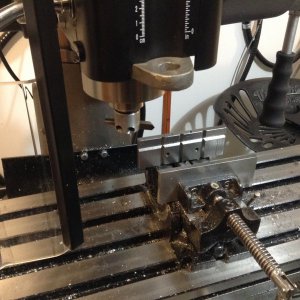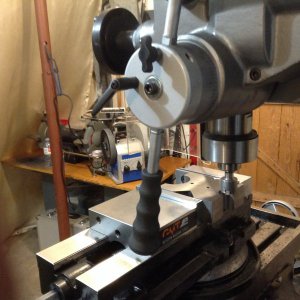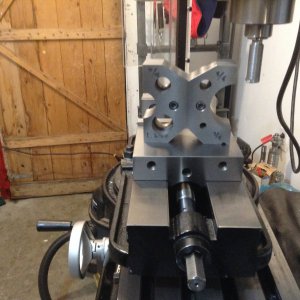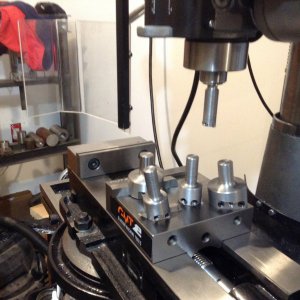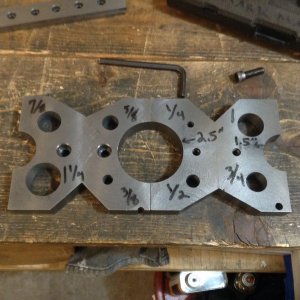- Joined
- Dec 20, 2012
- Messages
- 9,422
Can fly cutters be used on a lathe as well as a mill?
What would the major working differences be?
What sort of stuff is important to understand about fly cutters to the 1st time user of one?
Thanks, very interesting thread, love learning a new method technique!!
Yes, fly cutters can conceivably be used in a lathe, although that isn't something I've seen done. You would need some way to solidly mount the work piece vertically to the cross slide so you could fly cut it.
Fly cutting is most commonly used to flatten a surface. Depending on the work and the operator, this can be done with great precision over a rather large surface area, like a cylinder head. Most commonly, fly cutting is used to prepare a work piece on a mill. Most milling projects start out as rough stock that may or may not resemble something square and you need to make it square. To do that, you fly cut it in a specific sequence so that all 6 sides are square to each other. Then you can work that piece however you need to. If the sides are not square then every single operation you do will likewise be out of square so this is an important process. You can also do the same thing with an end mill or face mill. The former is very slow and tedious, the latter is much faster but a fly cutter is usually faster still.
If you want to use a fly cutter, best get yourself a mill first.


